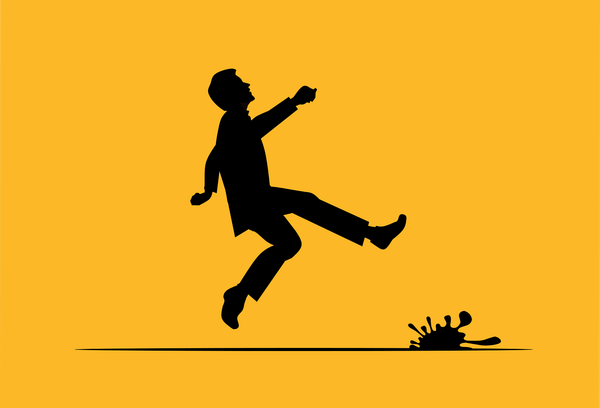5 ways to prevent slips, trips and falls
By Ray Bedson
As we approach the middle of winter and the rain sets in, the risk of slips, trips and falls increases for many industries.
Floor surfaces become slippery quickly from rain or wet shoes or tyres, minor oil spills on forklift pathways or carparks become major hazards when water is added to them and basically any outside area, or entrance threshold becomes a potential location for a workplace incident.
Slips, trips and falls injuries are the second highest cause of injuries across most industries. An average of around 20% of workplace injuries are related to slips, trips and falls. In terms of numbers of workers’ compensation claims, they sit just below musculoskeletal and just above mental injuries, which is the fastest-growing category. Overseas statistics speculate an average of 38 lost days and $40,000 per slip, trip or fall claim.
What injuries can result from a fall?
Injuries to the ankles, knees, feet, hips and lower legs are the most common injuries resulting from falls. Other parts of the body are also at risk, including the wrists and hands, as there is a natural tendency to brace yourself with your hands if you have a fall.
Sometimes these injuries heal quickly but not always. The recovery period can be very long. Expensive corrective surgery, rehabilitation, mobility restrictions and other related issues can occur from even a simple fall on a floor or path.
Fatalities, although rare, do occur. According to Safe Work Australia, slips, trips and fall injuries killed 386 workers between 2003 and 2015.
Common causes
Apart from wet weather, poor lighting can have a significant impact on the external environment. Slippery surfaces caused by rain, moss, leaf litter, snow, frost and ice can cause slips for outdoors workers.
Internal slippery surfaces are often caused by spills of oils, greases and water on tiled floors in kitchens and bathrooms. These types of workplaces include hospitals, restaurants, retail stores, aged care and childcare facilities, workshops and factories.
Workplace safety inspectors will often highlight housekeeping and clutter as big contributors to injuries. Inappropriate storage, waste, refuse and offcuts from work pieces should all be cleaned up regularly, and either stored or disposed of. Cylindrical objects on floors are a huge risk. Pipes, bars, coil springs and other round objects can all lead to workers slipping and falling.
Perhaps one of the most overlooked hazard is the extension cord. Don’t lay them across busy work areas or walkways. And put them away when their need is finished.
5 tips to reduce the risks
Many approaches can be taken to reducing the chance of a workplace fall. Following are five tips to reduce the risk of slips, trips and falls in your workplace:
- Consider the external environment. Lighting, particularly in winter may require improving. Access and egress to worksites should be well lit and extra temporary lighting may need to be installed. Marked walkways will keep pedestrians on the safest route. Regular cleaning of paths and driveways will assist in keeping a good grip on the surfaces.
- Make sure employees are wearing appropriate footwear for the environment in which they are working. Personal protective equipment (PPE) policies should be developed to set footwear standards.
- Oils, greases, detergents and foodstuffs should be cleaned up immediately. Slippery, wet floors caused by cleaning may be avoided if they can be done after hours or on weekends.
- Try to keep floor surfaces consistent wherever possible as slips often happen due to differing levels of friction. If this isn’t possible, identify changes with tactile dots, colour changes or signage.
- Ensure your housekeeping is up to scratch. Regular workplace inspections, adequate storage and clear locations for materials, waste and equipment will keep the workplace clutter free. Shadow boards, shelving, cleaning stations may all assist workers in maintaining a safe standard.
From the experts behind the Health & Safety Handbook, the Bulletin brings you the latest work health and safety news, legal updates, case law and practical advice straight to your inbox every week.

